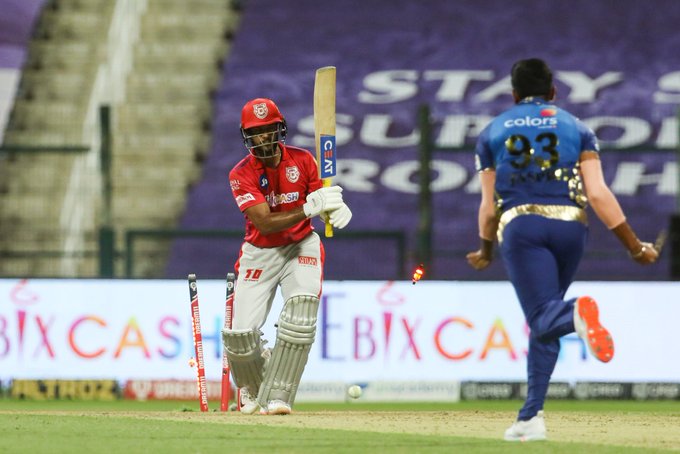In T20 cricket, the resounding crack of the bat meeting the ball and sending it soaring over the boundary for a six is a familiar sight. This thrilling spectacle, while exhilarating for fans, often leaves bowlers under pressure.
With the evolution of cricket and the advent of T20 leagues, there has been a noticeable increase in the number of players proficient at hitting sixes. This emergence of power hitters has led to a significant rise in run rates across the format. Consequently, bowlers find themselves facing an uphill battle as they strive to contain the opposition’s scoring.
Yet, amidst this frenzy batting, as the game becomes increasingly dominated by explosive batting displays, the value of a skilled bowler capable of stifling the opposition’s run-scoring potential becomes more apparent.

As a result, bowlers with the ability to consistently deliver tight overs and pick up crucial wickets become prized assets in the T20 arena. Their scarcity in a landscape dominated by powerful batters elevates their worth, Yet it’s surprising that commentators rarely discuss these aspects during live broadcasts, and its equally astonishing how many players, coaches, and decision-makers haven’t fully understood this concept till now!
Why’s the case with bowlers in T20 cricket
There are likely several reasons behind this. Firstly, an average fan may tend to overestimate the depth of strategic analysis and decision-making involved in team roster construction and selection. Secondly, and somewhat perplexingly, batters seem to be consistently overvalued, both in terms of their on-field performance (as evidenced by a high percentage of batters receiving player-of-the-match awards, for instance) and in terms of their marketing appeal. One of the recent matches explains this aptly.
It was the clash of Sunrisers Hyderabad with Mumbai Indians at Hyderabad where a total of 523 runs were scored. In the high scoring encounter where every bowler was hit for 10+ runs per over, it was Hyderabad captain Pat Cummins who demonstrated exceptional death bowling. With figures of 2/35 for an economy of just 8.75, he single-handedly pulled the game in favor of SRH.
But it was surprising at the presentations as the POTM went to Abhishek Sharma, a batter, for having the best strike rate. It’s puzzling that in a game where every batter was smashing the ball and the pitch appeared to be a paradise for batters, it’s the bowler who should have rightfully earned more recognition.
RCB’s struggle with a weak bowling unit
This IPL underscores Royal Challengers Bengaluru’s (RCB) ongoing struggle with their weak bowling unit. Their decision to release Wanindu Hasaranga left them with Karn Sharma as their primary spinner, supported by Mayank Dagar and the occasional off-spin of Glenn Maxwell. However, their pace attack fails to instill confidence.
Historically known for their strong batting lineup, RCB’s heavy investment in batting talent is evident from their expenditure. With a significant portion of their budget allocated to batters and batting all-rounders like Faf Du Plessis, Virat Kohli, Dinesh Karthik, Glenn Maxwell, and Cameron Green, it’s clear where their priorities lie.

Yet, despite their formidable batting strength, RCB’s bowling woes persist. Players like Alzarri Joseph and Yash Dayal have been hit for runs, highlighting the team’s mismanagement of bowling resources. The decision to splurge on Cameron Green during the pre-auction transfer, instead of addressing their bowling deficiencies, raises eyebrows.
With only one win so far in their first four games of this season, RCB’s inability to rectify their bowling shortcomings has resulted in a back-to-back humiliating defeat, indicating to the critical importance of a balanced squad composition in T20 cricket.
Bizarre decision-making from the DC franchise
The decision by Delhi Capitals to replace Lungi Ngidi with Jake Fraser-McGurk instead of opting for a replacement pace bowler is perplexing. While Fraser-McGurk is undoubtedly a promising talent with a bright future, the omission of a pace bowling reinforcement seems illogical.
Additionally, the subsequent decision to play Shai Hope over Fraser-McGurk adds further confusion to the situation. This decision-making process becomes even more questionable when considering the earlier decision to release Phil Salt and bring in Hope, which could be viewed as equally perplexing.
The old famous quote about bowling at the death for RCB could be edited and reused here: “If you have 100 Cr to build a cricket team, Mitch Marsh shouldn’t be a 4-over bowler”.
Amidst Ebbs and Flows, Cricket Needs to be Little more Practical But When?
Impact of a fast bowler in a cricketing game
Pacers play a crucial role in cricket, especially during the initial overs, where their primary objective is to unsettle the opposition by securing early wickets. Their rapid pace creates pressure, establishing an intimidating environment that can shake the confidence of opposing batters. Proficient fast bowlers employ swing and seam movements adeptly, perplexing batters and rendering themselves indispensable assets to their teams.
They significantly influence the momentum of matches by breaking crucial partnerships, particularly during the latter stages of the game. The ability to generate reverse swing adds a lethal dimension to their repertoire.
Mayank Yadav, the speedster from Delhi single-handedly is carrying LSG’s bowling
In both matches against RCB and Punjab Kings (PBKS), Mayank Yadav’s exceptional bowling played a pivotal role in securing victories for Lucknow Super Gia. Against PBKS, Yadav’s fiery spell disrupted Punjab’s strong opening partnership and claimed crucial wickets, including those of Jonny Bairstow and Prabhsimran Singh. His ability to consistently bowl at speeds of up to 152 kmph troubled the batters and helped LSG regain control of the match.

Similarly, in the match against RCB, Yadav’s controlled bowling in the middle overs proved decisive. He claimed three important wickets, including that of Glenn Maxwell, Chris Green, and Rajat Patidar. Yadav’s deliveries consistently clocked high speeds, forcing the batters into mistimed shots and resulting in wickets that deepened RCB’s batting woes.
In both instances, Yadav’s skillful bowling and pace played a significant role in dismantling the opposition’s batting lineup. This is cited to be a classic example of how your team prospers in the presence of a quality fast bowler.
Will the future change for T20 bowlers
Recruitment decisions in cricket are pivotal for a team’s success. However, these decisions are sometimes made without due consideration of historical patterns that indicate the importance of a balanced team composition. While batting prowess may appear to be the most glamorous aspect of the game, it’s essential to recognize the critical role that the bowling unit plays in securing victories.
Historically, successful teams in cricket have often boasted strong bowling attacks. This is because bowlers cannot only restrict the opposition’s scoring but also take wickets at crucial junctures, which can swing the momentum of a match in their team’s favor.
Ultimately, while batting may grab headlines and entertain fans, it’s the bowlers who often hold the key to victory, doing the donkey job. Therefore, wise recruitment decisions that prioritize the strengthening of the bowling department can significantly enhance a team’s chances of achieving success on the cricket field.























